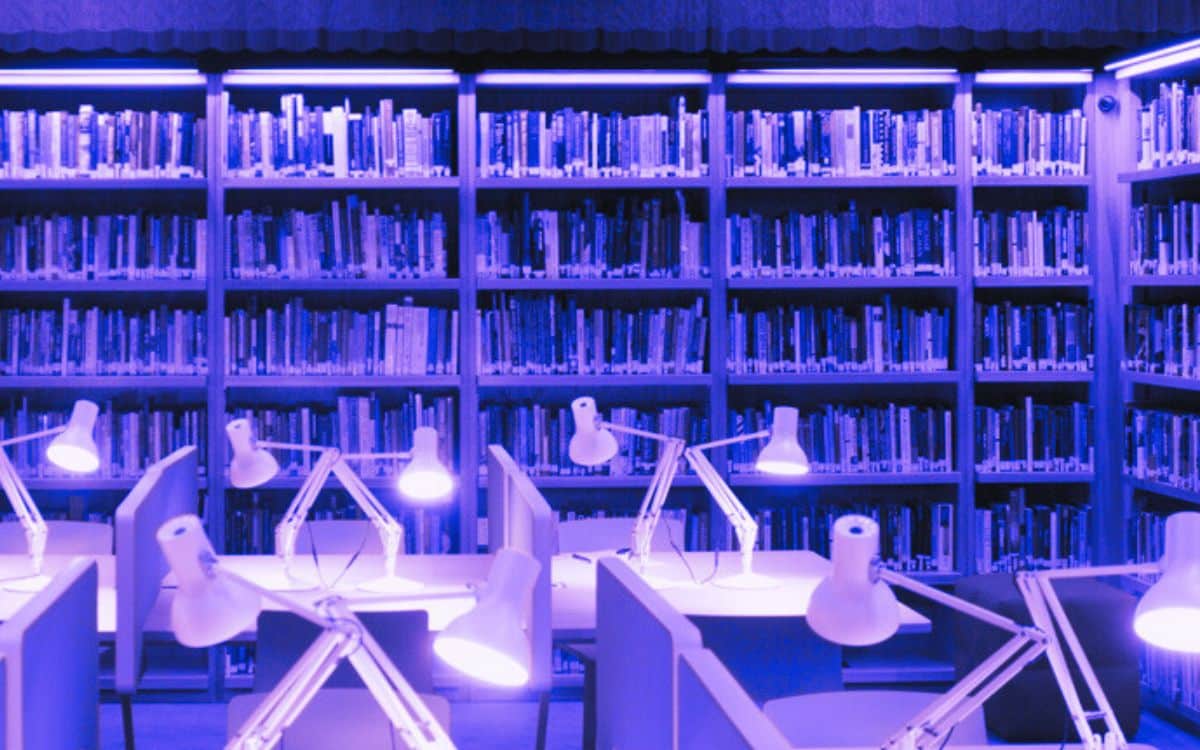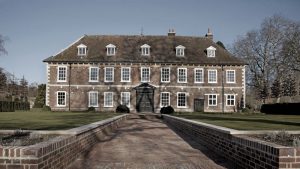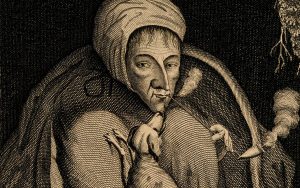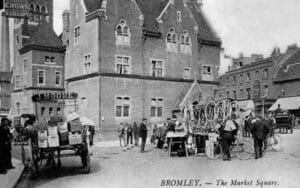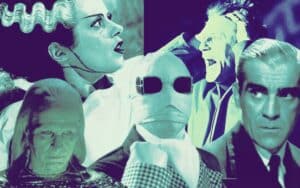Libraries in the London Borough of Lambeth have some very special connections to horror literature and the supernatural, says guest writer DAVID TURNBULL
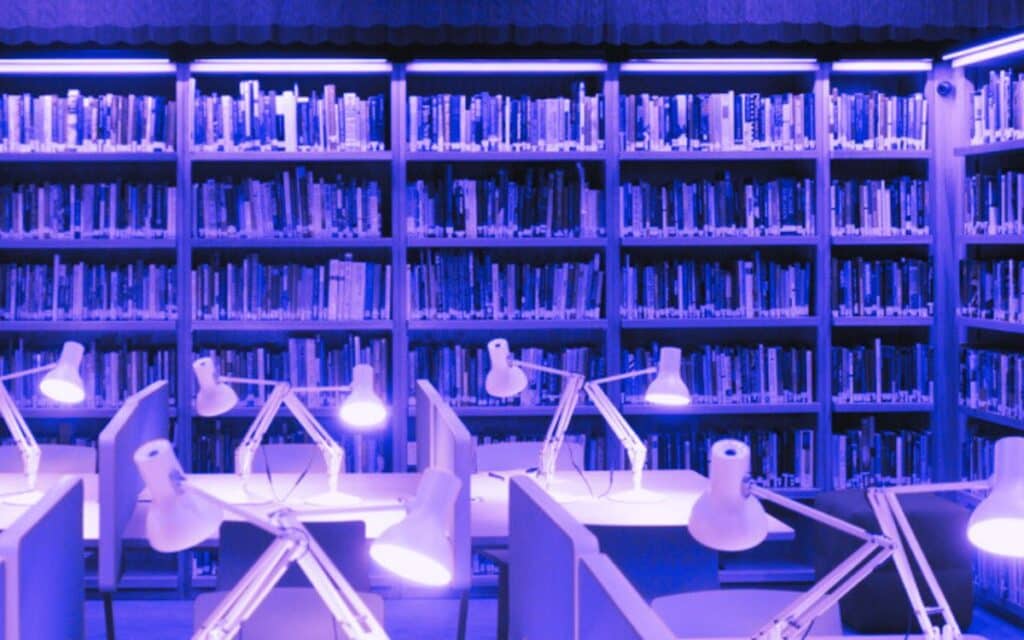
The London Borough of Lambeth stretches from the Thames at Waterloo, across Clapham, Kennington, Brixton and Streatham to Norwood and Herne Hill. Over the years, it’s been home to many writers of the horror genre, amongst them Dennis Wheatley, Sax Rohmer and Kim Newman.
Residing for many years on the edge of Clapham Common, Angela Carter was very familiar with the borough. Carter’s best known publication was her short story collection, The Bloody Chamber. The story in the collection based on Little Red Riding Hood was the source material for the 1984 werewolf movie The Company of Wolves.
Her last novel, Wise Children, was anchored in Lambeth, which she describes in the opening paragraphs as ‘the wrong side of the tracks. The side the tourist rarely sees. The bastard side of Old Father Thames. Wise Children is set mainly on a fictional street called Bard Road in Brixton, thought by many to be based on Shakespeare Road, which runs from the fringes of Brockwell Park Lido to Brixton’s Cold Harbour Lane.
On the first page Carter goes on to describe this part of south London as an area of urban deprivation, windswept bus stops, marital violence, drunken songs and the smell of fish and chips. The book was published in 1991 and the area wasn’t half as bad, even back then. Today it’s much improved. Although, like any inner city borough, it does have its challenges.
For fans of horror and the supernatural, however, it boasts a huge, often untapped attraction. Along the riverside, largely following the route from Waterloo Bridge to Lambeth Bridge, it boast no less than three specialist libraries where you can indulgently journey into the darker realms of cinema, poetry and witchcraft lore.
The Rueben Library at the BFI National Film Theatre
With an entrance to the side of Waterloo Bridge and an interior that runs under the structure of bridge The National Film Theatre has been based in Lambeth since the 1950’s. The Theatre was initially opened in a temporary building as part of the Festival of Britain in 1951 and moved to its current location in 1957.
Run by the British Film Institute, founded in 1933 as film and television charitable organisation with the aim of promoting, preserving, and documenting film-making and television. It boasts three cinema screens, a shop, restaurant and a café. Its film archives are accessible by request for research purposes and contain 60,000 fiction films, 120,000 non-fiction films and 750,000 television titles
Its library is open to the public and while you can’t borrow books you are able to browse and arrange a reading session. Funded by the Rueben Foundation it houses the biggest catalogue of movie related literature in the UK, including many titles linked to the horror genre.
Whether your interest is Hammer Horror, silent classics, such as Nosferatu or the Cabinet of Doctor Caligari, or seventies slashers, this is the place for you delve deep. It’s also the place to go if you want to research horror cinema on a global scale. Books on Italian Giallo, Bollywood Horrors and Japanese Anime can all be found here.
As well as well stocked shelves of physical books the library also boast an extensive digital catalogue, which includes film scripts, articles and posters.
More information can be found here https://www.bfi.org.uk/bfi-reuben-library
National Poetry Library at Royal Festival Hall
Pass under the arches of Waterloo Bridge at Belvedere Road or by the Southbank Thames side walk and you come to the Royal Festival Hall, the only remaining original structure of Festival of Britain. There are often genre related events at the Festival Hall in recent years these have included a full orchestra rendition of the music of the Lord of the Rings, Adventures in Moominland on the works of Tove Jansson and a talk by Margaret Lockwood, author of dystopian classic The Handmaid’s Tale. Over the past month there has been an exhibition and related events marking the 50th Anniversary of Alannin Sane, the 70s album by Brixton born David Bowie.
What is perhaps lesser know is that since 1988 The Royal Festival Hall has been home to the National Poetry Library. Situated on the 5th floor, this is a library that you can actually join and borrow books from. As its name suggests the library specialised in poetry and its stated aim is to hold all contemporary UK poetry publications since 1912. It also houses poetry related archives, including audio, magazines, and press-cuttings, images of poets, postcards and posters.
Poetry has a long association with ghosts, ghouls and horror. There is of course the gothic poetry of Edgar Allan Poe and the seminal poem on Halloween and witches, Tam O’Shanter by Robert Burns. The witches in Shakespeare’s Macbeth have their own particular poem. Worth mentioning also is, Phantasmagoria, the narrative poem by Alice in Wonderland author, Lewis Carrol, which features a long discussion on ghosts and hauntings between a phantom and a man named Tibbets.
The National Poetry Library boast an extensive collection of horror related poetry and anthologies. Amongst these are Penny Dreadful: tales and poems of fantastic terror, a collection of classic horror related poems entitled Poems Bewitched and Haunted, and Now We Are Sick, a 2005 anthology edited by Neil Gaiman and Stephen Jones were contemporary horror writers, such as James Herbert, Ramsey Campbell and Kim Newman turn their hands to poetry. Also available is an extensive ebook catalogue.
One those included in this collection is Dark Matters by Bruce Boston. This Bram Stoker Award Winning book of poetry collects 49 of his poems, including reprints from publications such as Asimov’s SF Magazine, The Pedestal Magazine, Space and Time, and Strange Horizons. The many of the poems in the collection are illustrated by Daniele Serra.
The library has a reference section and reading area where you might lose yourself for an entire day exploring the gothic and gruesome side of rhymes and cantos. More information on the National Poetry Library can be found here.
Lambeth Palace Library, Lambeth Palace
Carry on walking along the Southbank, past the London Eye, and under Westminster Bridge and you will find yourself at the Covid memorial wall opposite the House of Commons on the riverside walkway to the side of St Thomas Hospital. St Thomas boasts an extensive medical library, which is, unfortunately, only accessible to King College students.
But continue along the Thames to Lambeth Bridge and you will find yourself at Lambeth Palace, home since the 13th Century to the Archbishops of Canterbury. Next to the palace, opposite the Evelina Children’s hospital stands a relatively new building, which is Lambeth Palace Library.
Standing five stories high and sitting on the edge of Archbishop’s Park, work on building the library commenced in 2018 and continued throughout lockdown, opening to the public post pandemic. The stated object of the library is to collect, preserve and make accessible the culture and religious history of the Church of England. The library was first founded in 1610 under the will of Archbishop Richard Bancroft and was originally housed in the Palace itself. It contains thousands of books and archives collected by Archbishops over the centuries. You can’t borrow any of its books but you can join as a reader and access them in its well-lit reading room on the ground floor.
If you are interested or are researching subjects such as witchcraft, demonology, spiritualism or exorcism this would be the place to go. The church has a deep connection to such matters, which appear to have been of great interest to numerous Arch Bishops. The library holds the only surviving pamphlet describing the trial of three alleged witches in Chelmsford in 1589.
A sample of the unusual book titles you might wish to access are – Necessary Questions about Witches and Witchcraft written by Matthew Hale in 1693, Infernal Conference, or Dialogues of Devils written by John McGowan in the 18th Century, Ghosts of London HV Morten 1939, and The Trial of a Teenage Werewolf, Bordeaux, 1603, written by Caroline Oats in 1988.
More information can be found here: https://www.lambethpalacelibrary.info/
So Reels, Rhymes or Rituals. Whatever your preference head across the bridge to Angela Carter’s wrong side of the tracks, and take ad dark and informative journey through Lambeth’s fantastical trinity of specialist libraries.
David Turnbull is a writer of short fiction, with stories published in many magazines and anthologies. His near future horror novella HUSks can be found here. His blog “Things That Go Bump in My Mind” connected to the anthologies of the Fiction4All imprint Gravestone Press can be found here.

